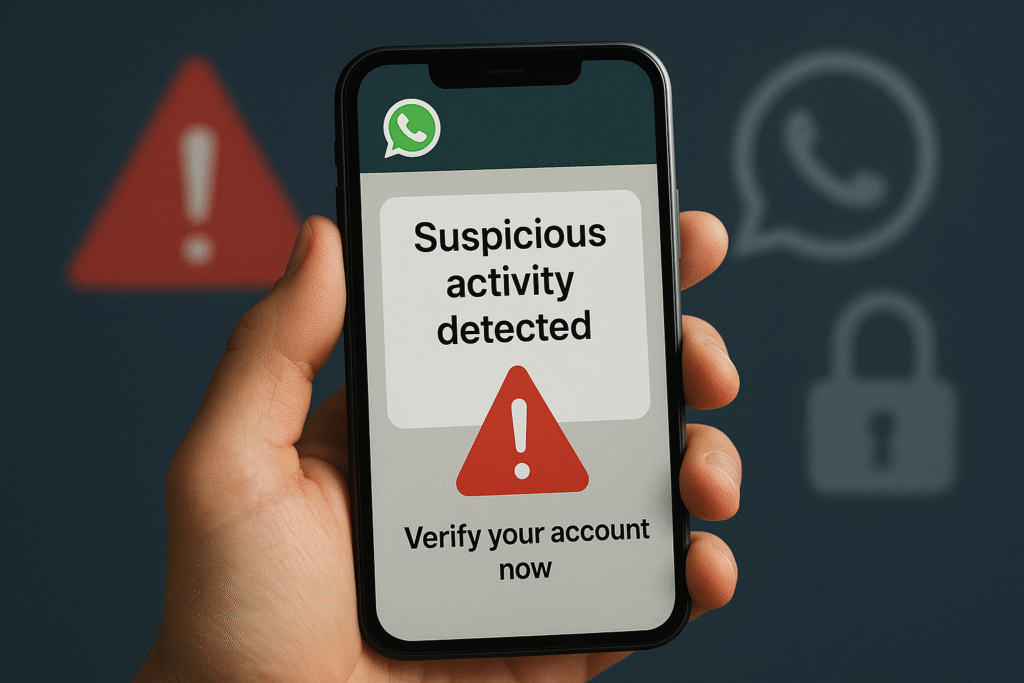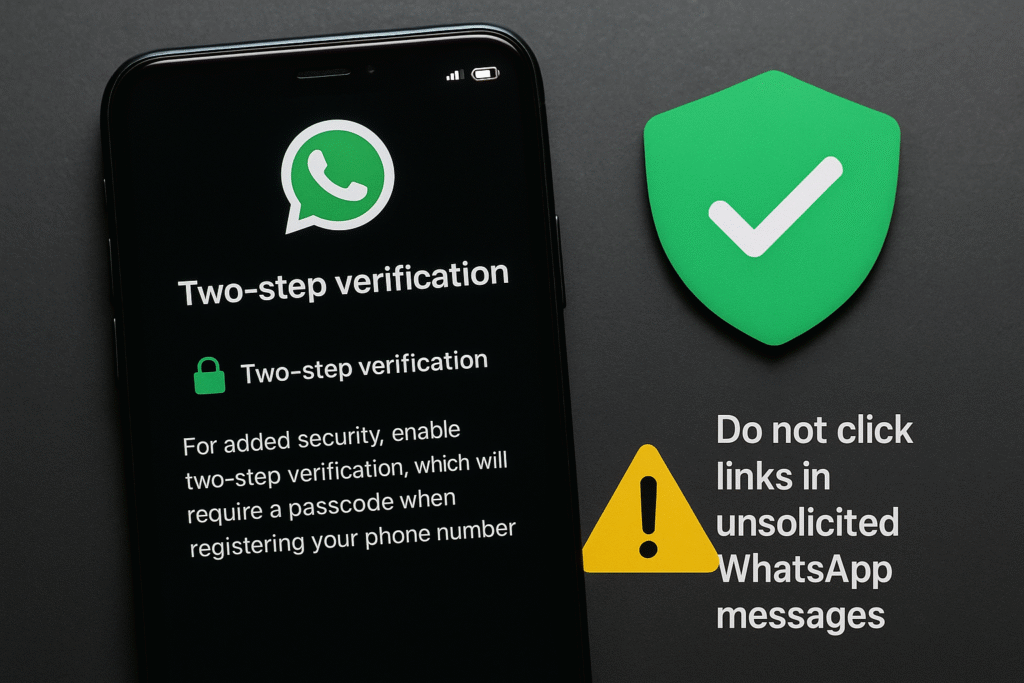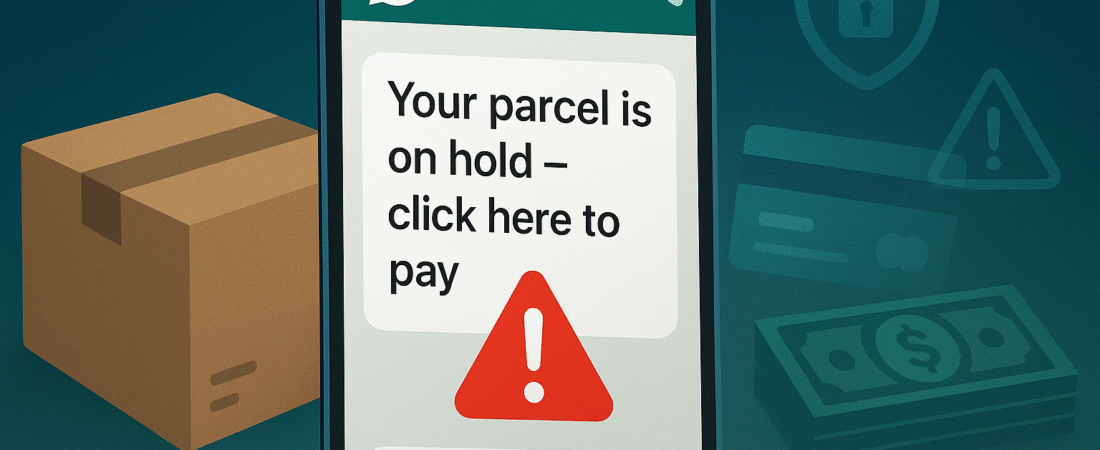🚨 Don’t click that “parcel held” message! Learn how fake Whats-app courier alerts are stealing money — and how you can stay safe. Fraudsters send fake Whats-app courier alerts to trick users into sharing banking details. Learn red flags and how to avoid these scams.
Imagine receiving a WhatsApp message stating, “Your parcel is held for customs clearance. Click here to pay the delivery fee.” The message looks official, urgent, and convincing. Many users panic and click without verifying. This is a classic example of the WhatsApp parcel delivery scam, where fraudsters send fake courier alerts via WhatsApp to extract sensitive banking information or authorize payments. With the rise of e-commerce and home deliveries, such scams have become increasingly common, making awareness crucial for every smartphone user.
Background
Courier-related scams have been reported in India and globally for over a decade. Earlier, they primarily appeared as SMS delivery scam messages or email alerts, claiming a delivery failure and prompting users to click a link or provide personal information. For instance, fake India Post messages would ask users to update their address to receive a parcel.
With WhatsApp being widely used across India, scammers shifted platforms, adopting WhatsApp phishing scam tactics to target users more effectively.
These messages mimic courier company branding, appear urgent, and exploit trust to extract money or compromise accounts.
High-profile incidents have underscored the dangers. In Karnataka, a couple fell victim when hackers hijacked their WhatsApp accounts using fake courier alerts.
The scammers then sent messages to their contacts requesting emergency money.

Impact
The WhatsApp parcel delivery scam can lead to serious consequences:
- Financial loss – Victims may unknowingly share OTPs, UPI codes, or card details. A woman in Bantwal lost over Rs. 2.4 lakh after repeated payments for a non-existent parcel.
- Account hijacking – Scammers can gain control of WhatsApp, sending fraudulent messages to your contacts for money.
- Data theft and identity fraud – Personal information collected through the scam may be reused in other cybercrimes.
- Emotional distress – Victims feel violated and lose trust in digital services.
These scams also erode public confidence in digital payments and online shopping, indirectly affecting the e-commerce ecosystem. Experts warn that even a single mistake can have cascading consequences, especially for older users who may be less tech-savvy.
Scam Mechanics
Understanding how courier fraud messages and WhatsApp phishing scam tactics work can help you avoid them:
| Stage | What Happens | Red Flags / Notes |
| Initial contact | You receive a WhatsApp message claiming your parcel is held or delivery failed. | Urgent language, threats of return, or legal action. |
| Link / code prompt | Message asks you to click a link to pay delivery fees or confirm your address. | Legitimate couriers rarely request payments through WhatsApp links. |
| Phishing site / app | Link leads to a site mimicking the courier company, asking card/UPI/OTP info. | Look out for unusual domain names or typos. |
| Account takeover | Scammers ask you to dial USSD codes or merge calls, allowing them access. | Your WhatsApp may log out, and contacts receive unusual messages. |
| Payment requests | Hijacked accounts request money from friends or family. | Payment requests may come from familiar contacts but through unknown accounts. |
Scammers often use fake parcel scam India tactics, leaving QR-coded parcel cards or making calls claiming missed deliveries. Once users scan the QR code or dial the number, they are directed to phishing websites or apps demanding payment. A Reddit user reported receiving a courier call, pressing a code, and then seeing their WhatsApp log out with a warning: “This account is not allowed to use WhatsApp due to suspicious activity.”
Public & Media Reaction
Indian media has highlighted the rise of WhatsApp parcel delivery scam and courier company impersonation cases. The Times of India urged users to be vigilant, noting that victims often hesitate to report incidents.
Government advisories have warned against fake messages claiming to be from India Post. Cybercrime helplines, such as India’s toll-free 1930, provide support for victims to report suspicious messages.
Experts note that many victims remain silent due to embarrassment or belief that reporting won’t help. However, timely reporting can prevent further loss and help authorities trace scammers.

Prevention / Tips
Here’s how you can protect yourself from falling prey to a WhatsApp parcel delivery scam or WhatsApp phishing scam:
- Do not click links in unsolicited WhatsApp messages: If you receive a message claiming “parcel held” or “delivery failed,” don’t click the link. Always go via the courier’s official website or app.
- Verify with the courier directly: Use the courier’s official contact number or app to check status. If the message claims “DHL,” “India Post,” etc., go to their verified portal—not via the WhatsApp link.
- Be cautious of urgency and threats: Scammers create panic (e.g., “within 2 hours, package returned”) to make you act hurriedly. Stop and analyze.
- Never share OTP, bank PIN, or credentials: Legit services will never ask for your OTP, UPI PIN, or net-banking credentials over WhatsApp.
- Avoid dialing strange USSD/call codes: If someone asks you to dial *##…# or merge calls, refuse. That is often how they trigger call forwarding or phishing.

- Enable two-step verification on WhatsApp: Add a PIN so even if someone attempts to register your number, they cannot easily take over your account.
- Use good mobile security / anti-malware apps: This can help detect if a link or app is malicious.
- Report immediately if you suspect fraud: In India, call 1930 or file a complaint via the National Cybercrime Reporting Portal. The faster you act, the higher the chance of freezing funds.
- Inform your contacts: Let your friends/family know if your WhatsApp is compromised so they don’t fall for ransom/emergency messages from your account.
- Clean up your parcel labels carefully: Fraudsters sometimes salvage discarded parcel boxes that carry name, address, contact info. These details may help them craft more credible couriers scams.
To know how to identify fake WhatsApp parcel delivery messages, look for unknown numbers, links with odd domains, urgency, and requests for OTP. If you ever find yourself asking what to do after falling for courier scam: Immediately block the sender, change passwords, enable 2FA, report to police/helpline, and attempt to freeze bank transactions.
Summary
The WhatsApp parcel delivery scam is evolving rapidly — blending phishing, social engineering, and account takeover into one dangerous package. The moral is: never click suspicious courier links, verify before paying delivery charges, and act fast if you suspect foul play. With vigilance and a skeptical approach to “urgent delivery alerts,” you can avoid being another in the growing list of scam victims.
